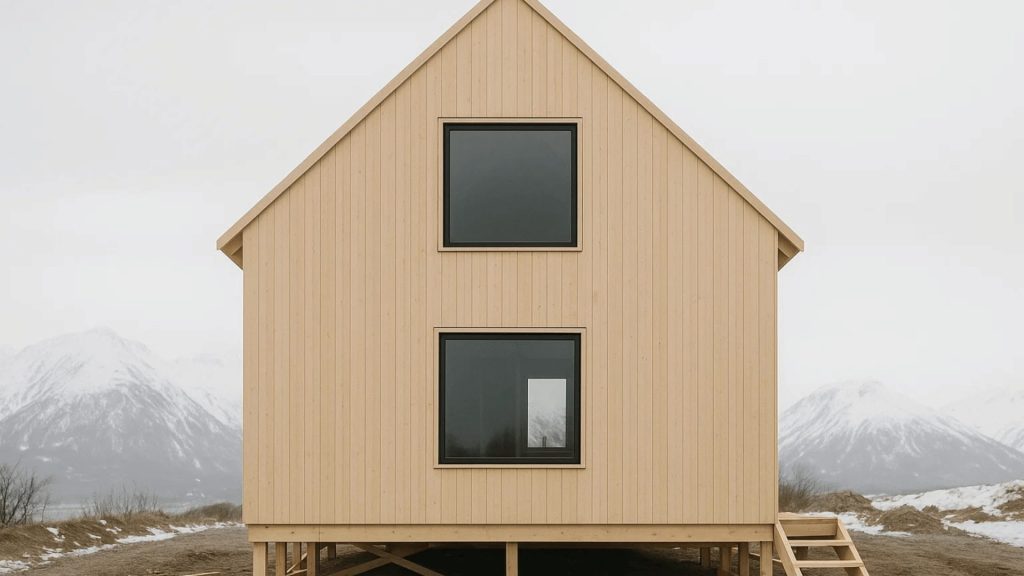Building an Accessory Dwelling Unit (ADU) is an exciting opportunity to create more living space, generate rental income, or provide a comfortable place for family. But before the first wall goes up, the design stage plays a critical role in determining how well your new space will function and look. That’s where working with an architect comes in.
An architect helps you turn ideas into plans that fit your property, comply with California’s ADU regulations, and reflect your style. By understanding what to expect during the process and how to prepare in advance, you can make the experience smoother and the results more rewarding.
Why an Architect is Essential for Your ADU Project
While some homeowners may be tempted to start construction right away, skipping the architectural planning stage often leads to costly changes, delays, and design compromises. An architect offers both creative and technical expertise to make sure your ADU works for you now and in the future.
The Role of an Architect in ADU Design
An architect isn’t just a plan drawer they are a problem solver, space planner, and your advocate throughout the design process. For an ADU, their work includes:
- Designing a layout that fits your property’s dimensions and intended use.
- Integrating the ADU’s style so it complements your main home and neighborhood.
- Ensuring the plans meet all California building codes and local zoning requirements.
- Coordinating with engineers, contractors, and permit authorities to keep the project on track.

Key Benefits of Hiring an Architect for an ADU
- Efficient Use of Space – Every corner is designed with a purpose, especially in compact ADUs.
- Regulatory Compliance – Avoiding plan rejections by meeting all requirements from the start.
- Design Expertise – Achieving a balance between aesthetics, comfort, and practicality.
- Added Value – A well-designed ADU can increase your property’s market appeal.
What to Expect When Working With an Architect
The process of working with an architect for an ADU typically follows a structured sequence.
1. Initial Consultation & Needs Assessment
The first step involves discussing your vision, whether that’s a rental unit, a guest house, or a family suite. The architect will review your goals, budget, property layout, and any special requirements.
2. Site Analysis
Your architect will visit the property to take measurements, assess sunlight and shade patterns, identify utility connection points, and note any slope or access considerations.
3. Concept Design Phase
You’ll see preliminary sketches or layouts that show potential floor plans and exterior styles. At this stage, you can request changes and explore different configurations.
4. Detailed Drawings & 3D Models
Once the concept is approved, the architect prepares detailed construction documents and often provides 3D visualizations so you can picture the finished ADU.
5. Permitting Assistance
An architect familiar with California ADU laws can prepare the necessary paperwork and submit it to your local building department for approval.
6. Optional Construction Oversight
Some architects stay involved during construction to ensure the build follows the approved design.

How to Prepare Before Meeting Your Architect
The better prepared you are, the more productive your first meeting will be.
Clarify Your Purpose
Knowing why you want an ADU will guide the design direction. Common purposes include:
- Rental Property – Generate consistent income.
- In-Law Suite – Provide independent living for family members.
- Guest House – Offer privacy and comfort for visitors.
- Workspace or Studio – Create a dedicated area for work or hobbies.
Establish a Budget
Include design fees, permits, site work, materials, and furnishings in your calculations. Having a budget range helps your architect suggest realistic solutions.
Collect Inspiration
Photos, floor plans, and style examples from magazines or online sources can help communicate your preferences.
Understand Local Regulations
Even a quick review of your city’s ADU rules will give you a clearer picture of potential size limits, setbacks, and parking requirements.
Plan Your Timeline
Consider when you’d like the ADU completed and share any deadlines with your architect so they can plan accordingly.
Questions to Ask Your Architect
The right questions can help you choose an architect who is a good fit for your project:
- How much experience do you have designing ADUs in California?
- Are you familiar with my city’s specific ADU codes?
- Do you offer 3D renderings of the design?
- How do you help clients manage costs during the design phase?
- Can you recommend sustainable building materials?
- Do you handle permit applications or guide me through the process?

Tips for a Smooth Collaboration
Working closely with an architect requires mutual understanding and clear communication.
- Keep Communication Open – Share your thoughts promptly and ask questions as they arise.
- Be Open to Suggestions – Your architect may propose creative solutions you hadn’t considered.
- Decide Promptly – Delayed approvals can slow progress.
- Review Documents Carefully – Make sure you understand each stage of the design before signing off.
How Nestadu Makes the Architect Collaboration Easier
At Nestadu, we know that working with an architect can feel overwhelming at first, so we’ve built a process that keeps everything organized and stress-free.
- Experienced Design Team – We work with architects who specialize in ADUs, ensuring plans are both creative and practical.
- Clear Pricing – You’ll know the costs from the beginning, with no hidden surprises.
- Local Expertise – Our team is familiar with California ADU rules and approval processes.
- Full Project Support – From the first sketch to the final walkthrough, we’re by your side.
Final Thoughts
Working with an architect is one of the most important steps in building a functional and attractive ADU. A thoughtful design can make the difference between a space that simply meets code and one that feels like home.
If you’re considering an ADU for your property, Nestadu can guide you through the entire process, connecting you with skilled architects and ensuring your vision is turned into a well-built reality.

